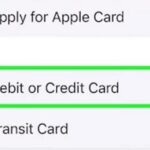Selling disability insurance effectively hinges on understanding the unique needs of each client and presenting solutions that resonate with their concerns. When discussing How To Sell Disability Insurance? it’s crucial to highlight its significance in safeguarding financial stability in case of unexpected life events. This insurance type provides a safety net, ensuring that individuals can maintain their lifestyle even if they’re unable to work due to a disability.
Key Takeaways
- Understanding client needs is essential.
- Highlighting the significance of financial stability.
- Presenting tailored solutions.
How To Sell Disability Insurance?
Selling insurance effectively involves a series of steps designed to understand client needs, educate them about the product, and guide them through the decision-making process. Here’s a detailed breakdown:

- Understand the Product Thoroughly: Gain in-depth knowledge about disability insurance, including the types of policies (short-term and long-term), coverage details, exclusions, and benefits. Understanding the product will allow you to answer any questions confidently and accurately.
- Identify Your Target Market: Determine who your potential clients are. This could include professionals in high-risk jobs, self-employed individuals, or primary breadwinners in families. Knowing your target market helps tailor your sales approach effectively.
- Educate Potential Clients: Provide informative content about the importance and benefits of disability insurance. This can be done through seminars, webinars, social media posts, blogs, or direct mail. Education helps in raising awareness and breaking down misconceptions.
- Conduct Needs Analysis: When you meet with potential clients, conduct a thorough needs analysis. Understand their occupation, income level, family obligations, and any existing coverage they may have. This helps in recommending the most suitable policy.
- Present Tailored Solutions: Based on the needs analysis, present insurance options that align closely with the client’s specific requirements. Tailoring your solutions increases the likelihood of a sale as it directly addresses the client’s concerns.
- Address Concerns and Objections: Be prepared to handle common objections, such as cost concerns or misconceptions about disability insurance. Offer clear, factual information to alleviate these concerns.
- Guide Through the Application Process: Assist clients in the application process by making it as straightforward as possible. Help them understand the terms and conditions of the policy and what documents are required.
- Provide Excellent Customer Service: Once the policy is sold, maintain contact with your clients. Excellent post-sale service can lead to referrals and repeat business. Regularly check in and offer to review their coverage as their life circumstances change.
- Leverage Technology: Use Customer Relationship Management (CRM) tools to keep track of your clients and prospects. Online marketing tools and social media can also be effective in reaching a broader audience.
- Continuous Learning and Adaptation: The insurance industry is constantly evolving. Stay updated with the latest trends, products, and regulations. Attend industry workshops and training sessions to enhance your skills and knowledge.
- Build a Referral Network: Develop relationships with other professionals like financial advisors, accountants, and human resource managers who can refer clients to you. A strong referral network can significantly boost your sales.
- Compliance and Ethical Selling: Always adhere to industry regulations and ethical selling practices. Being honest and transparent with clients not only builds trust but also ensures long-term success in the field.
These steps, when executed effectively, can lead to successful sales in disability insurance, ensuring that clients receive the coverage they need while also building a sustainable and profitable business for the agent.
Understanding Disability Insurance
Understanding disability insurance is the first step in effectively selling it. Disability insurance is designed to replace a portion of one’s income if they become disabled and are unable to work. It’s an essential part of financial planning, providing income security.
Types of Disability Insurance
There are two main types of disability insurance: short-term and long-term. Short-term disability insurance typically covers a few months, while long-term disability insurance can last for years or even until retirement.
Short-term Disability Insurance
- Duration: A few months
- Suited for temporary disabilities
Long-term Disability Insurance
- Duration: Years or until retirement
- Covers more severe, long-lasting disabilities
Tailoring Solutions to Individual Needs
Tailoring solutions to individual needs involves understanding the specific circumstances of each client. Each person’s occupation, health status, and financial obligations play a crucial role in determining the right disability insurance coverage.

Assessing Client Needs
Gathering information about the client’s occupation, health, and financial situation is crucial. This assessment helps in proposing the most suitable insurance plan.
Occupation Analysis
- Understanding the client’s job role
- Assessing risks associated with their profession
Health and Financial Evaluation
- Health status assessment
- Financial obligations and income analysis
Effective Communication Strategies
Communicating the benefits of disability insurance effectively is key. Effective communication strategies involve clear, empathetic, and informative discussions that resonate with clients’ concerns.
Building Trust with Clients
Establishing trust is fundamental. Clients are more likely to invest in a policy if they trust the advice and integrity of the insurance agent.
Establishing Credibility
- Demonstrate industry knowledge
- Show understanding of client concerns
Empathetic Communication
- Listen actively to clients’ needs
- Address concerns with compassion
Marketing Disability Insurance
In the realm of marketing disability insurance, a blend of traditional and digital marketing strategies can be effective. It’s about reaching potential clients where they are most receptive.

Traditional Marketing Techniques
Traditional methods, such as seminars and networking events, remain effective in building personal connections and trust.
Hosting Informative Seminars
- Organize educational sessions
- Address common misconceptions about disability insurance
Networking
- Attend industry events
- Build relationships with potential clients
Digital Marketing Strategies
Leveraging digital platforms broadens your reach. Social media, email marketing, and informative content can attract a wider audience.
Social Media Engagement
- Share informative content on platforms like LinkedIn and Facebook
- Engage with the audience through comments and messages
Email Marketing
- Send newsletters with valuable information
- Use targeted email campaigns to reach potential clients
Handling Objections and Concerns
Handling objections and concerns is a critical aspect of selling disability insurance. It involves addressing common reservations and misconceptions.
Common Objections
Clients often have concerns about cost, necessity, or the complexity of insurance policies.
Addressing Cost Concerns
- Explain the cost-benefit analysis
- Discuss various plan options to fit budgets
Overcoming Misconceptions
- Clarify myths about disability insurance
- Provide factual information and statistics
The Role of Technology in Selling Disability Insurance
Embracing technology enhances the process of selling disability insurance. Digital tools can streamline the sales process, making it more efficient and accessible.

Digital Tools and Platforms
Using CRM systems, online quoting tools, and virtual meeting platforms simplifies the sales process.
CRM Systems
- Manage client information efficiently
- Track client interactions and follow-ups
Online Quoting Tools
- Provide instant policy quotes
- Facilitate easier decision-making for clients
How To Make Money Selling Disability Insurance?
Selling disability insurance can be a lucrative career path, primarily when focused on addressing the real needs of clients. Earning potential in this field largely comes from commissions on policies sold, which can be significant depending on the policy’s size and terms.

To maximize earnings, agents should focus on building a broad client base, educating potential customers about the importance of disability insurance, and staying informed about different insurance products and market trends.
Networking, referral programs, and leveraging digital marketing can also play a vital role in increasing sales and, consequently, income. Additionally, specializing in disability insurance for specific professions or industries can lead to higher sales due to the tailored approach.
Why Do People Buy Disability Income Insurance?
People buy disability income insurance primarily for the financial security it offers in the event of an unforeseen disability that prevents them from working. The key motivation is to ensure a steady flow of income if they’re unable to earn a salary due to a short-term or long-term disability.

This type of insurance is especially important for those with dependents or significant financial obligations, such as a mortgage or education loan. The peace of mind that comes with knowing they and their families are financially protected is a significant factor driving people to invest in disability income insurance. Moreover, individuals in high-risk jobs or those without a substantial financial safety net are more likely to consider this insurance essential.
Is Disability Insurance An Investment?
Disability insurance is often considered a form of investment in personal and financial stability. While it does not offer the traditional returns of an investment like stocks or real estate, it provides something arguably more valuable: income security and risk mitigation.
By paying a relatively small premium, individuals are essentially investing in a safety net that ensures financial stability in case of disability, which can have a significant impact on earning potential.
This kind of insurance is particularly important for individuals who are the primary breadwinners in their families or who have significant financial obligations. Therefore, while disability insurance may not grow wealth in the traditional sense, it protects against the financial devastation that a disability could cause, which can be seen as an investment in financial health and well-being.
Conclusion
Selling disability insurance effectively requires a deep understanding of the product, empathetic communication, and tailored solutions. By addressing the specific needs and concerns of clients, utilizing both traditional and digital marketing strategies, and leveraging technology, insurance agents can successfully guide clients toward securing their financial future. Remember, how to sell disability insurance is not just about the sale; it’s about building relationships and providing value through security and peace of mind.
People Also Ask
What happens to my disability insurance if I change jobs?
If your disability insurance is provided by your employer, it may not be transferable if you change jobs. However, if you have an individual policy, it stays with you regardless of your employment status.
Can I have multiple disability insurance policies?
Yes, you can have multiple policies. They can work together to provide a higher level of income protection. However, be aware of any coordination of benefits clauses that might limit the total benefits you can receive.
How do I choose the right amount of disability insurance coverage?
The right amount of coverage depends on your income, expenses, and financial obligations. A common recommendation is to have enough coverage to replace 60-70% of your monthly income.
Can I get disability insurance if I have a pre-existing condition?
Yes, but it may be more challenging. Insurers might exclude coverage for disabilities related to pre-existing conditions or charge higher premiums. It’s essential to disclose all medical information during the application process to avoid issues later.

Muhammad Talha Naeem is a seasoned finance professional with a wealth of practical experience in various niches of the financial world. With a career spanning over a decade, Talha has consistently demonstrated his expertise in navigating the complexities of finance, making him a trusted and reliable figure in the industry.









